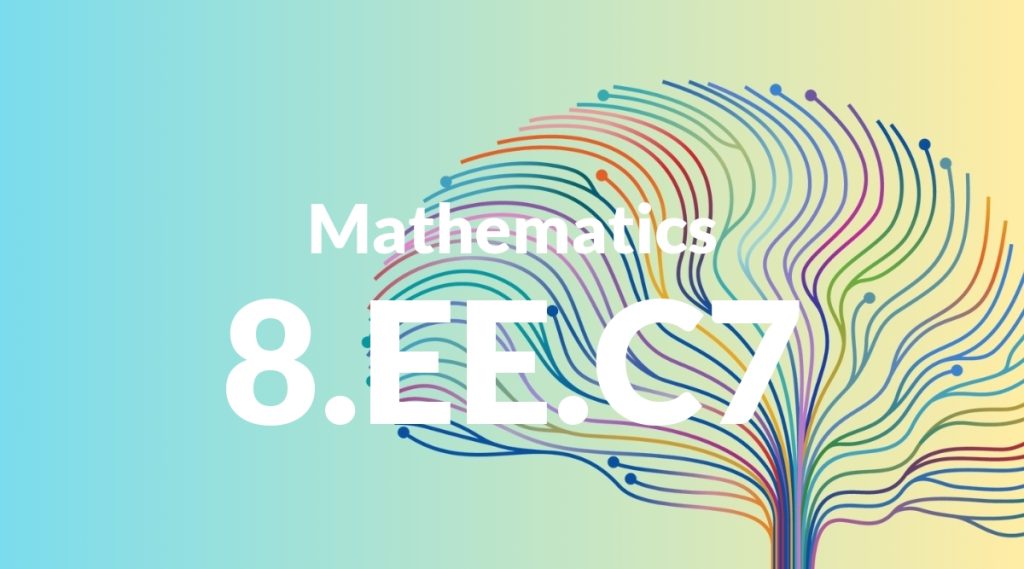Standard: 8.EE.C7 – Solve linear equations in one variable.
Grade level: Grade 8
Subject: Mathematics
Domain: Expressions & Equations
Teacher Overview
This standard focuses on solving linear equations in one variable, a foundational skill in algebra. Mastery of this standard is crucial as it sets the stage for more advanced topics in mathematics, such as systems of equations and functions. Students should be comfortable with basic algebraic operations and the properties of equality. They should know how to manipulate simple equations and understand the concept of maintaining balance in an equation.
Students will develop the ability to solve more complex equations and systems of equations. They will also be equipped to explore quadratic equations and delve deeper into functions.
Common Misconception 1
Many students think that the variable must always be on one side of the equation. This is incorrect because variables can be moved across the equation as long as the operations are performed correctly.
Intervention 1
Use visual aids and balance scales to demonstrate that variables can be on either side of the equation. Practice with varied equation forms to reinforce this concept.
Common Misconception 2
Some students believe that adding or subtracting the same number from both sides of the equation changes the equality. This is incorrect because the balance of the equation is maintained as long as the same operation is applied to both sides.
Intervention 2
Introduce the balance model to show that whatever is done to one side must be done to the other. Use hands-on activities with physical scales to reinforce this idea.
Prerequisite Knowledge
Students should have a solid understanding of basic algebraic concepts, including operations with integers, fractions, and decimals. They should also be familiar with simple equations and the properties of equality.
Subsequent Knowledge
After mastering this standard, students will be able to solve more complex equations and systems of equations. They will also be prepared to tackle quadratic equations and explore functions in greater depth.
Instructional Activities
- Interactive equation-solving games
- Group work on real-world problem scenarios
- Hands-on activities with balance scales
- Guided practice with step-by-step solutions
- Peer tutoring sessions




